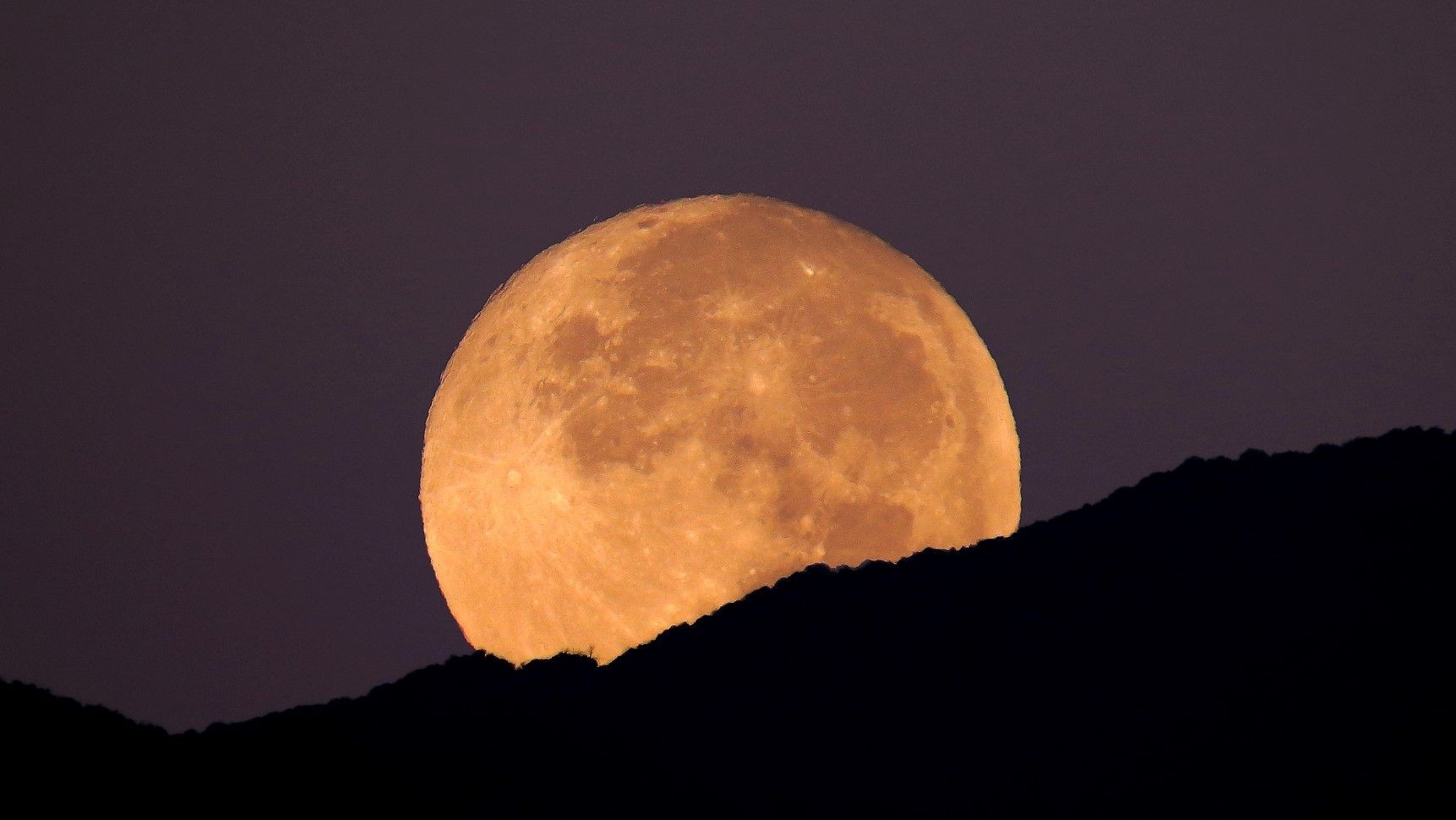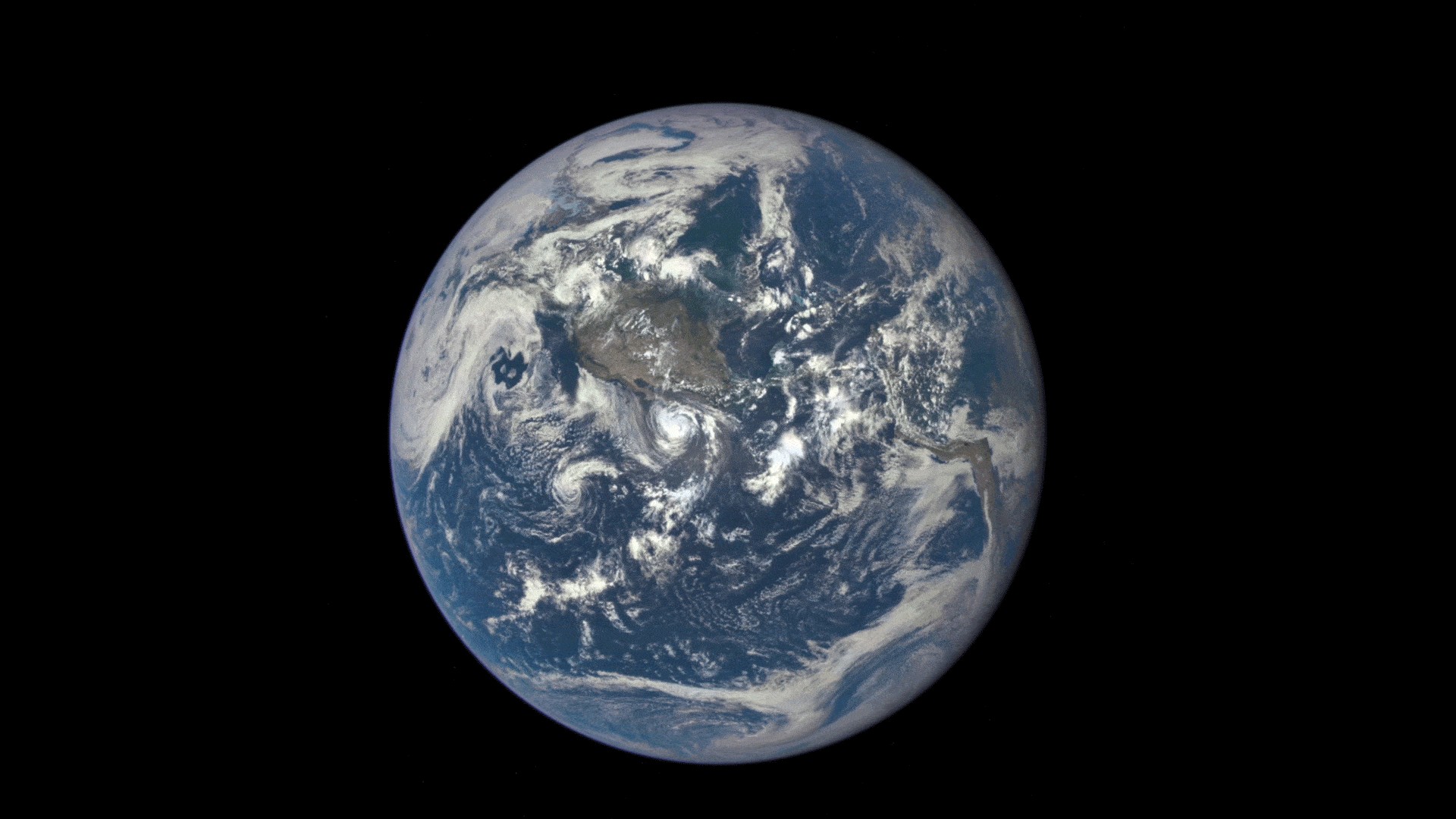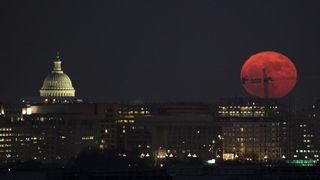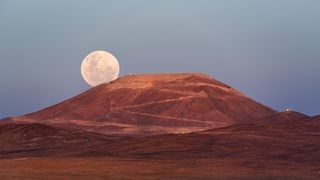The moon, Earth’s constant companion, illuminates our night sky and has captivated humanity for millennia. Often appearing large and bright overhead, it’s natural to wonder: just how big is the moon compared to Earth? While it dominates our night sky, the reality is that the moon is significantly smaller than our home planet.
To truly understand the size difference, let’s delve into the numbers and comparisons that put the Earth and moon’s dimensions into perspective.
Decoding Moon Size: Diameter, Radius, and Circumference
NASA data reveals key measurements that define the moon’s size:
- Mean Radius: 1,079.6 miles (1,737.5 kilometers)
- Mean Diameter: 2,159.2 miles (3,475 km)
- Equatorial Circumference: 6,783.5 miles (10,917 km)
These figures establish the moon as a substantial celestial body in its own right. However, when placed next to Earth, a different picture emerges.
Earth Dwarfs the Moon: A Size Ratio Breakdown
Comparing the moon’s diameter to Earth’s, we find that the moon is just over a quarter the size of our planet. Specifically, the moon’s width is less than one-third that of Earth, approximately 27% of Earth’s size. This size ratio (roughly 1:4) is actually quite significant when compared to other moons in our solar system and their parent planets. In most other cases, moons are far smaller in relation to their planets.
To visualize this size disparity, NASA offers a relatable analogy: “If Earth were the size of a nickel, the moon would be about as big as a coffee bean.” This simple comparison effectively illustrates the considerable size difference between the two.
Furthermore, considering surface area, the moon covers approximately 14.6 million square miles (38 million square km). While vast, this is less than the entire continent of Asia, which spans about 17.2 million square miles (44.5 million square km). This comparison highlights that even the moon’s total surface area is smaller than a major continental landmass on Earth.
Moon Stats in Detail
For a quick reference, here are key statistics about the moon:
Moon Statistics
- Radius: 1,079.6 miles (1,737.5 km)
- Diameter: 2,159.2 miles (3,475 km)
- Surface Area: 14.6 million square miles (38 million square km)
- Mass: 7.35 x 10^22 kg
- Density: 3.34 grams per cubic centimeter (3.34 g/cm3)
Mass, Density, and Gravity: Further Comparisons
Beyond size, comparing mass and density further emphasizes the Earth’s dominance. The moon’s mass is only about 1.2% of Earth’s mass. In simpler terms, Earth is about 81 times more massive than the moon.
Density also differs, with the moon having a density of 3.34 g/cm3, roughly 60% of Earth’s density.
Perhaps most noticeably for a hypothetical lunar traveler, the moon’s gravitational force is only about 16.6% of Earth’s gravity. This means you would weigh approximately six times less on the moon. Imagine jumping nearly 60 feet on the moon if you can jump 10 feet on Earth!
The Moon’s Place Among Solar System Moons
While smaller than Earth, our moon holds a significant position in the solar system. In fact, relative to its planet, Earth’s moon is the largest in the solar system. However, in absolute size, it ranks as the fifth-largest moon overall.
Jupiter’s moon Ganymede claims the title of the largest moon in the solar system, surpassing even the planet Mercury in size.
The 10 Largest Moons in Our Solar System
| Rank | Moon | Equatorial Radius | Parent Planet |
|---|---|---|---|
| 1 | Ganymede | 1,635 miles (2,631 km) | Jupiter |
| 2 | Titan | 1,600 miles (2,575 km) | Saturn |
| 3 | Callisto | 1,497 miles (2,410.3 km) | Jupiter |
| 4 | Io | 1,131.7 miles (1,821.6 km) | Jupiter |
| 5 | The Moon | 1,079.6 miles (1,737.5 km) | Earth |
| 6 | Europa | 969.84 miles (1,560.8 km) | Jupiter |
| 7 | Triton | 840.96 miles (1,353.4 km) | Neptune |
| 8 | Titania | 490.19 miles (788.9 km) | Uranus |
| 9 | Rhea | 474.91 miles (764.3 km) | Saturn |
| 10 | Oberon | 473.11 miles (761.4 km) | Uranus |




Supermoons and the Moon Illusion
Have you ever noticed the moon appearing exceptionally large on certain nights? This might be a “supermoon.” This phenomenon occurs because the moon’s orbit around Earth is not perfectly circular. When a full moon coincides with the point in its orbit closest to Earth (perigee), we experience a supermoon. These supermoons can appear up to 14% larger and 30% brighter than average full moons.
Another intriguing aspect of lunar perception is the “moon illusion.” Often, the moon seems much larger when it’s near the horizon, rising or setting. This is an optical illusion, not a real change in the moon’s size. While the exact cause is still debated, one theory suggests our brains compare the horizon moon to familiar terrestrial objects, making it seem larger in comparison to trees and buildings.
Conclusion: A Significant Size Difference
In conclusion, while the moon is a prominent and fascinating celestial body, it is considerably smaller than Earth. Understanding the size comparison through diameters, radii, mass, and surface area reveals the true scale of our planetary neighbor. Despite its smaller size, the moon plays a vital role in Earth’s systems, influencing tides and captivating our imaginations. The next time you look up at the moon, remember its actual size relative to our planet – a smaller world with a significant presence in our sky.
Further Resources:
- For more moon facts, explore educational infographics by ESA.
- Discover how much you would weigh on the moon and other celestial bodies with this interactive tool from the Exploratorium.
- Learn more about the Ponzo illusion and other optical illusions at The Illusion Index.
References:
- NASA Moon Facts: https://moon.nasa.gov/about.cfm
- NASA Solar System Exploration: https://solarsystem.nasa.gov/moons/earths-moon/in-depth/#otp_size_and_distance
- Space.com articles as linked throughout the original article.
- The Nine Planets: https://nineplanets.org/questions/how-big-is-the-moon/
- ESA Education: https://www.esa.int/Education/Teach_with_the_Moon/Moon_fast_facts
- Exploratorium: https://www.exploratorium.edu/ronh/weight/
- The Illusion Index: https://www.illusionsindex.org/i/ponzo-illusion

